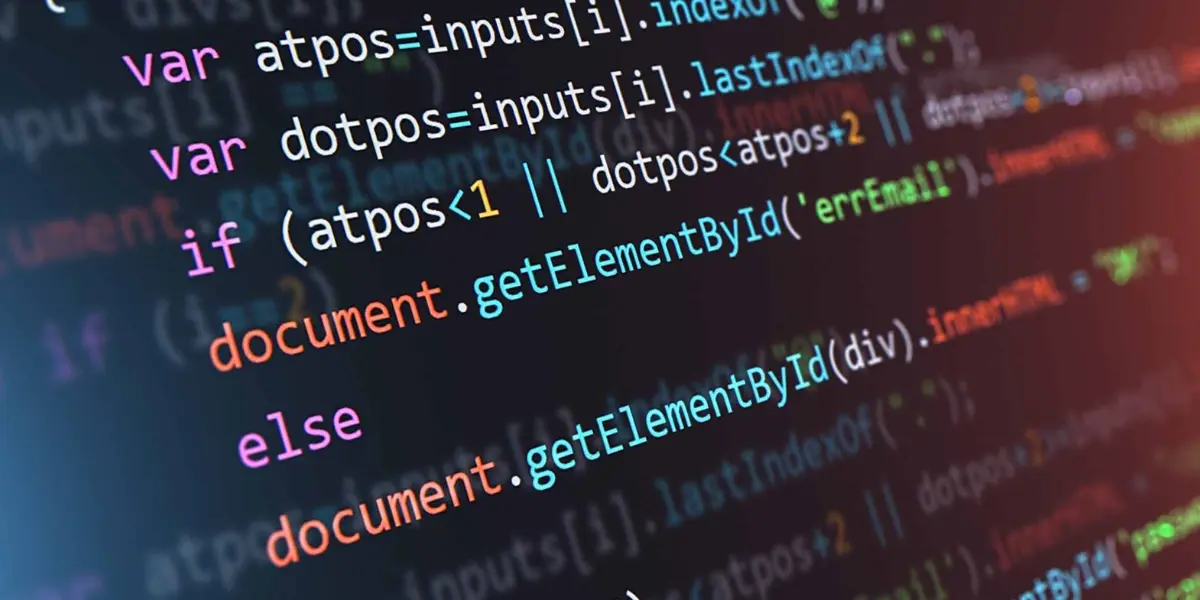Who owns the source code? What about intellectual property?
Behind every piece of software, every mobile application and every website there is a source code that allows it to run. As for any intellectual work or invention, its intellectual property belongs to its creator. This is called copyright. In a simplified vision of things, there are two types of creators. The creator can be an individual, such as a developer, or a legal entity (commercial company, organisation, community, etc.).
In addition to the source code, the architecture of the software, the accompanying documentation, its interface, and the preparatory design material of the software are also protected by copyright. More clearly, the software is protected from its very first trial and test versions.
In addition, to be recognised as intellectual property, a software program and its source code must demonstrate their original character. In other words, it must be possible to prove that the computer program is the result of an original intellectual contribution, of an effort made by the developer or the owner company and demonstrates a creative choice.
While a freelance developer automatically owns the rights to their software, employees in a company automatically assign the copyright to the organization that employs them. Ownership by the employees of the source code’s intellectual property is only possible following a specific agreement between them and their employer. It should be noted that there are some particular cases concerning identification of the author of a work not covered in this article.
For businesses, it is advisable in all cases to have explicit copyright assignment agreements with employees, consultants, and subcontractors to avoid any disputes over intellectual property.
How to protect source code from counterfeiting?
From the moment they create software, the developer or company automatically own the rights to it. Nevertheless, to avoid counterfeiting and misuse of the source code by third parties, it is strongly recommended to adopt specific actions that reinforce the protection of the source code.
Registering software copyright with a deposit
Whatever the form of the program, registering your software copyright through an Intellectual Property depositgives you irrefutable proof of the creation date and enables you to claim authorship in the event of litigation. You can register this copyright with a specialist trusted third party, even before offering the application to the general public. It is strongly recommended to make this deposit from the first development phases and to remember to update it regularly.
Following the initial registration, it is advisable to update it to take account of each patch or upgrade. The trusted third party with whom the source code has been registered will issue a time-stamped certificate that will serve as proof if the authorship of your software is challenged.
In addition to the source code, the graphic interfaces of a website, the processes, methods and technical documentation, the databases, operating systems and 3D images, the plans and drawings for video games, etc. are also protected by copyright if they meet the condition of originality.
Take the time to write the license for the program
As a general rule, software and mobile and web apps are not sold to the user. Instead, a user license is granted allowing purchasers to benefit from the services provided by the computer program. In other words, users are informed of their rights and restrictions, particularly with respect to copying and access to source codes.
For reasons of interoperability, some software is sometimes obliged to reveal some or all of its source code to users. This does not mean that the owner loses its intellectual property rights, as the licence agreement does not imply a transfer of intellectual property and the software publisher retains full ownership of its copyright.
If the user misuses the source code, even partially, contrary to the restrictions imposed by the legal notices and licence agreement, they are liable to legal proceedings. If in doubt about the limits of the rights and uses related to protection of your software’s source code, we advise you to get in touch with a consultant in intellectual property law who will be able to guide you.
These confidentiality clauses must be carefully drafted to protect not only the source code but also the algorithms and other intellectual property not explicitly included in the code.
Test the security of the software
Whether the source code is for PC/Mac/Linux software, an iOS/Android mobile app, an online store or a SaaS (Software as a Service), it can lead to a security breach by offering a gateway for hackers to enter your systems.
To ensure your program’s cyber security and protect your customers, perform as much security testing as possible and comply with your national cyber security agency’s recommendations for implementing good IT security practices. If you don’t know where to start, have a third-party cyber security audit performed.
Whenever a vulnerability is detected, patch it as soon as possible. Even if your software creation is partly based on third-party software, especially open source, you are responsible for the entirety of your production and its security level.
It should be noted that cyber security is an ongoing process – even after patches are produced and released, you must continue testing regularly to prevent hackers from eventually finding the flaw in your application and exploiting it to steal your customers’ data or block their systems.
To summarise: answers to your questions about the intellectual property of source code
Who owns source code?
Since the Berne Convention was signed in 1979, successive decisions by the European Courts have ruled that software belongs to its developer if they have developed it individually. In a company, if employees develop a program in the course of their work and using the company’s resources, the program’s intellectual property belongs entirely to the company. If, on the other hand, an employee creates an application outside of their working hours and using their own resources, the work belongs to them without the employer having any right of review, except in the case of infringement of its intellectual property. In some cases, attribution of authorship of the work is more complex (in the case of a consultant or co-authors, for example) and will require the setting up of a contract for transfer of copyright.
It is advisable for businesses in all cases to establish detailed specifications to monitor development, as well as to implement explicit copyright assignment agreements with employees, consultants, and subcontractors, to prevent any future disputes over ownership.
If in doubt, we advise you to contact your intellectual property rights consultant.
What is the definition of source code?
In simple terms, source code can be defined as the human-understandable language used to create a computer program. It can be contrasted with object code, which is the machine-understandable language. All software, mobile apps, websites or even SaaS (Software as a Service, on the cloud) include source code.
How can you protect source code?
The primary protection for source code is legal. Anyone who copies, uses, translates or exploits your code or your software without your consent can be prosecuted. You will be able to claim damages for the loss suffered. To prove the authorship of your computer program, register it with a certified trusted third party who will affix a certified time-stamp to it. This registration can be done from the first prototypes and test versions of the software.
How to analyse source code?
Source code can be analysed to identify technical errors and then correct them. We can also analyse source code in order to notice a possible plagiarism by a program or a competing site. A source code audit can also be used to determine its security level and the presence or absence of known vulnerabilities in the code. Developer teams can use tools such as Review Board or Crucible to analyse their code, but only source code scanning tools, such as the one offered by Vaultinum, will comprehensively reveal all cybersecurity and intellectual property vulnerabilities in the code.
Disclaimer
The opinions, presentations, figures and estimates set forth on the website, including in this blog, are for informational purposes only and should not be construed as legal advice. For legal advice you should contact a legal professional in your jurisdiction.
The use of any content on this website, including in this blog, for any commercial purposes, including resale, is prohibited, unless permission is first obtained from Vaultinum. Request for permission should state the purpose and the extent of the reproduction. For non-commercial purposes, all material in this publication may be freely quoted or reprinted, but acknowledgement is required, together with a link to this website.

